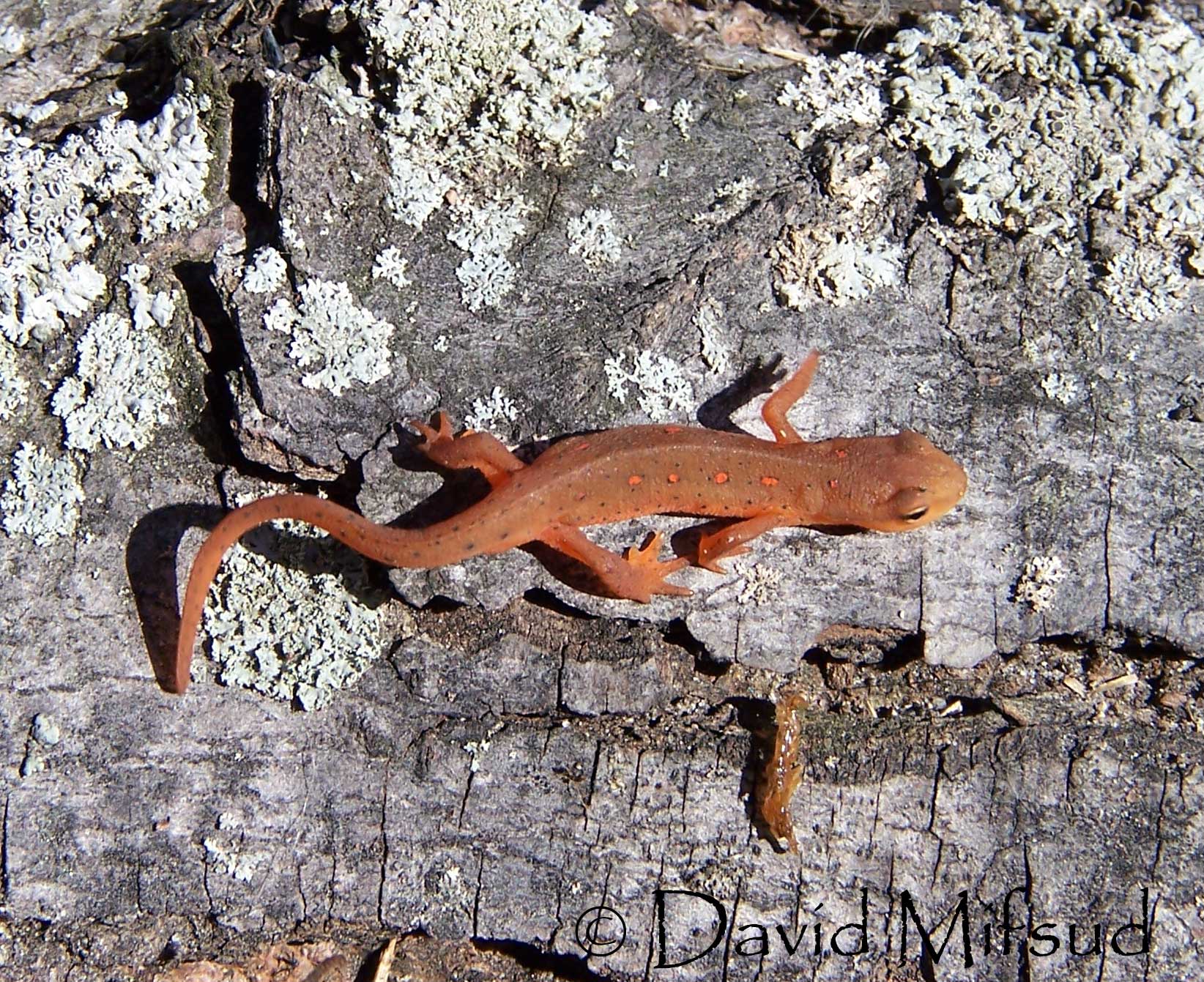
Notophthalmus viridescens (eft phase)
Natural History
The Red-spotted is a subspecies located within our area. Currently this species is believed to have a relatively stable population in South East Michigan. The preferred habitat is permanent ponds with ample aquatic vegetation. The efts (the terrestrial sub-adult stage of the Eastern Newt) are found in wooded areas near breeding ponds, taking refuge under rotting logs, boards, and other suitable objects. Wetland buffer zone is an important habitat type for this species. Very tolerant to climatic conditions, they can endure dry conditions and adults can remain active all year in deeper ponds. In shallow ponds that become dry in summer or freeze in winter, they are able to aestivate or hibernate on land where they become darker and regain an eft-like skin texture.
Reproduction and Growth
Eastern Newts migrate to breeding ponds in late winter or early spring. Once they have returned to the ponds their aquatic morphology such as skin texture, color, and tail fins redevelop. All stages of Eastern Newt have toxic skin secretions. Efts have the greatest concentrations of poison glands and they ward off potential predators with their bright red/orange color. Breeding may occur in late fall or spring, but eggs are laid in spring only.
The male deposits a spermatophore or a series of spermatophores and females pick up the spermatophore and store it in the cloaca. Egg laying occurs in April and May. Females deposits from 30-300 or more eggs over a period of several days or weeks – usually attaching them singly to plants or other objects. Incubation lasts from 2-5 weeks depending on water temperature. Recent metamorphs leave the water in late summer where they transform into eft. Efts can remain on land for 2-7 years before undergoing a second metamorphosis into an aquatic breeding adult. Newts may skip the terrestrial stage and metamorphose directly into adults and can live for over 10 years.
Conservation
Habitat loss and degradation and the collection for pet and biological supply trade are the major reasons for decline in this species. Habitat preservation including wetland buffers is critical in keeping this relatively common species common. Newts are an important part of both aquatic and terrestrial ecosystems and they serve many functions, including eating a lot of mosquito larvae!
Habitat Type
- Ephemeral wetlands
- Permanent wetlands
- Forests
